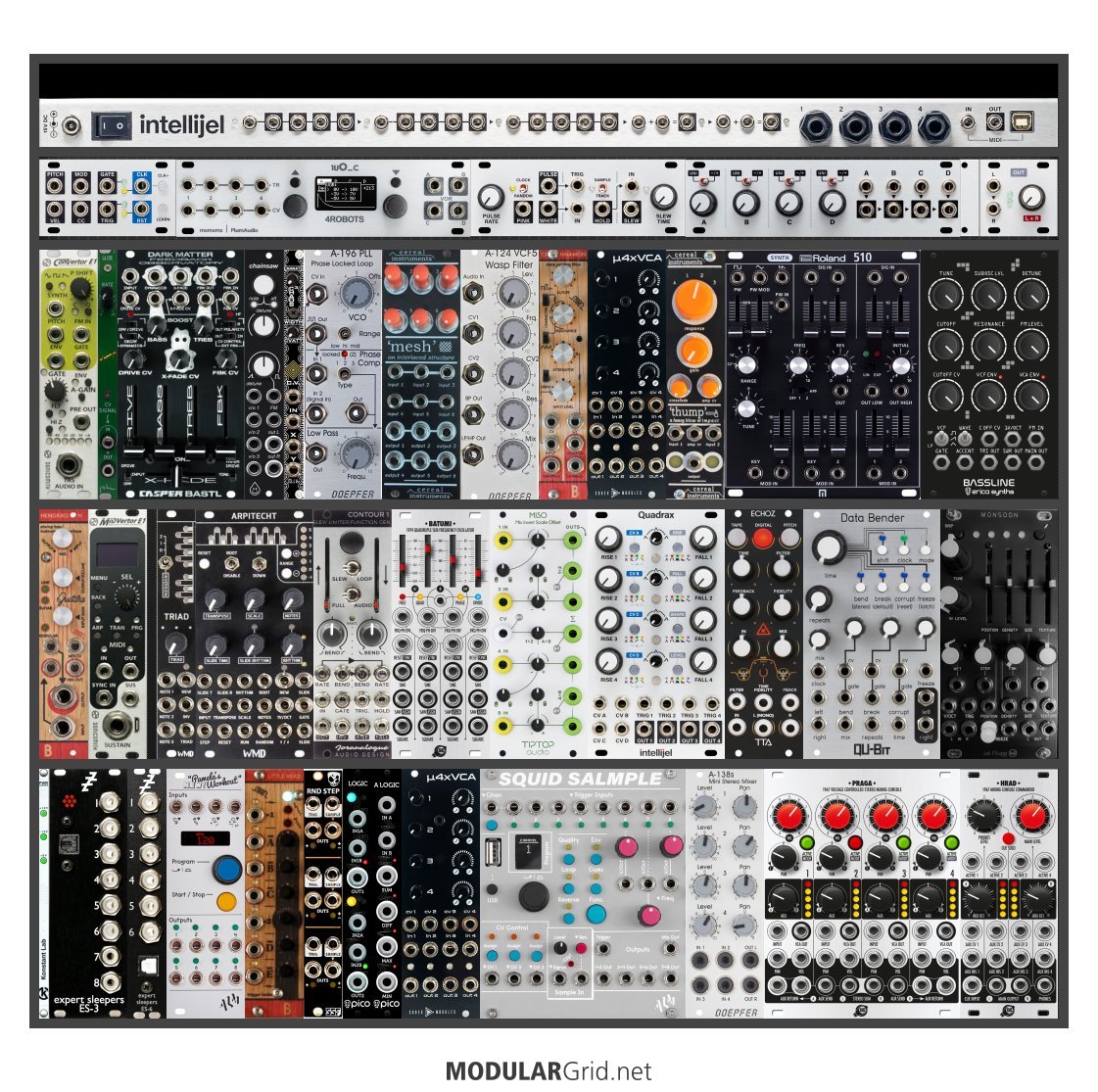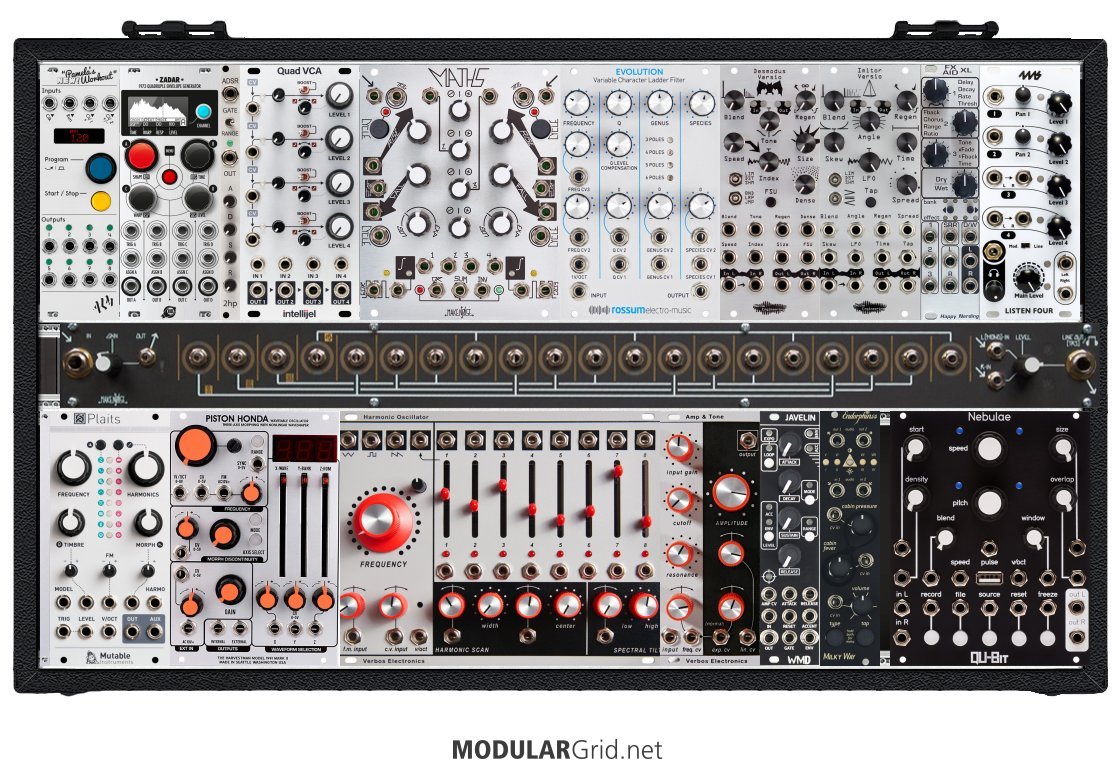OK...I tore into this, figuring it was a simple enough rebuild...and then I started banging into the case's limitations. The aim was, of course, to try and keep as many of the original modules as possible, but some of those were just the wrong choices. So I tossed those, expanded the case (the build now fits into a Tiptop Mantis [or any other 2 x 104] and an Intellijel Palette 104), and restarted. With the larger cabs, this started all snapping into place and in a much more orderly manner. Provided MG's screenshot function is working (it wasn't when I posted this, so if you don't see the rack, just wait a while and come back to the post), here it is:

I'll go over the updates and reordering...
First up, the Intellijel cab offers a utility row at the top, with more than enough mults, your audio outs, power, and your MIDI in. In fact, since both of these cabs are powered, the uZeuses are gone.
Tile row: Added a single-channel MIDI interface, a Noise Tools, and a separate stereo out to a pair of the cab's 1/4" jacks. This leaves two of the 1/4" jacks unused, unless you want to branch the stereo out tile to both pairs of 1/4" jacks to allow a second stereo pair for separate processing, etc.
Row 1: It's the same modules until you hit the Zlob Triple Cap Chaos, which functions as a waveshaper and/or ring modulator. I co-located this with the Chainsaw VCO. PLL, then the dual 3-in mixer for summing oscillators, and after that there's one of two Codex Modulex's Veils clones. After that is the LPG (technically a VCA, so it's just past the Veils clone), then your two voice modules. The entire top row is your "voicing".
Row 2: All your picks, until we get to the middle. This is where I added a Batumi (more LFOs), a MISO (for altering/mixing/wrecking CV and modulation signals), and a Quadrax which now puts your EG count at 4. After that, your effects...I added a Tiptop ECHOZ along with the Data Bender and Monsoon. These all work in league with the main stereo mixer below.
Row 3: the little sliver is a Konstant Labs PWRchekr, which makes up for the lack of DC bus indications on the Mantis. ES-3 and 4 are co-located. Then all of the timing...Pam's, Little Nerd, RND Step (sample and hold, yes, but it needs the timing pulses) and your logic. Then a second Veils clone handles VCA duties for modulation and CVs. After the Squid Salmpler, there's a new stereo submixer to help get that down to a stereo feed. Then you now have a PROPER stereo mixer in there with the Praga/Hrad, which provides your final audio VCAs, plus CV over panning, CV over AUX send levels, your AUX returns, headphone pre (with cue), and main level control.
Not only does this layout make far more sense (and it also makes the build more intuitive to use), by going to the larger cabs, I was able to kick this all the way up in terms of having everything in there to make the majority of your original modules do what they SHOULD do. Now, some things were tossed out because the changes made them irrelevant (such as the Pip Slope), and I got rid of the drums in here because, tbh, drums added to a modular build are just...well, there's ways to do that, but they don't exactly fit in here at this point. You're actually better off using a proper drum machine with this, or outputting drums via VCV as direct audio into your DAW. But the results here do bear out the changes, I think, as this appears to be a much more capable build than the original. Its still a tad short on modulation sources for my tastes, but as it stands here, this should up your game considerably.



